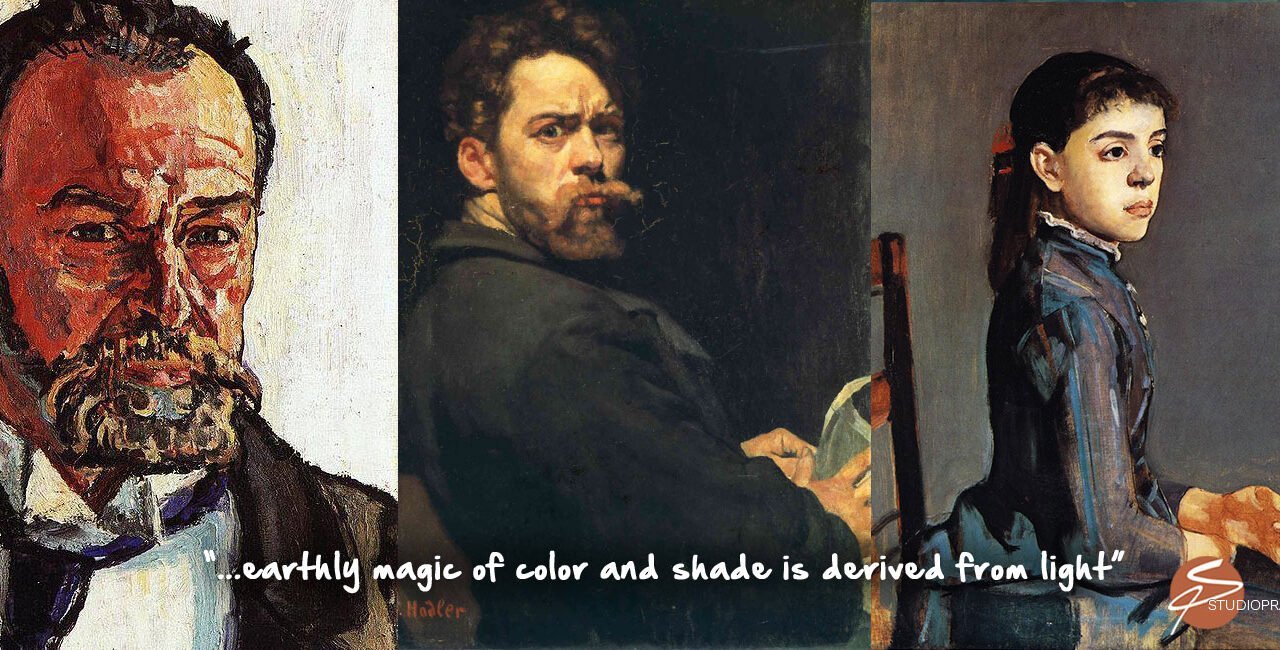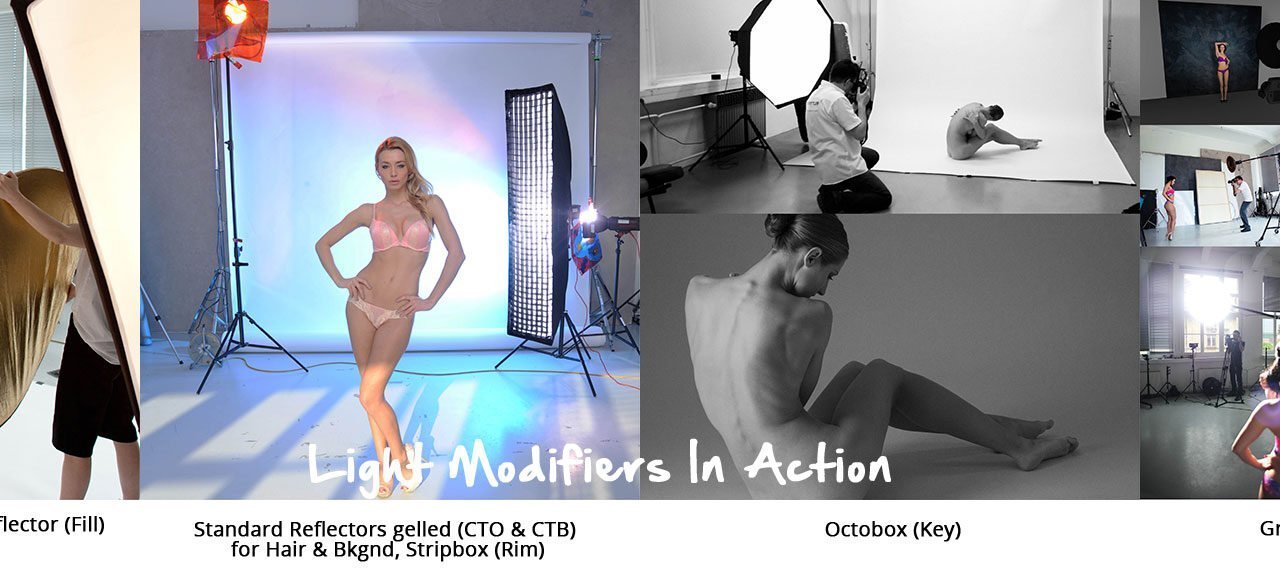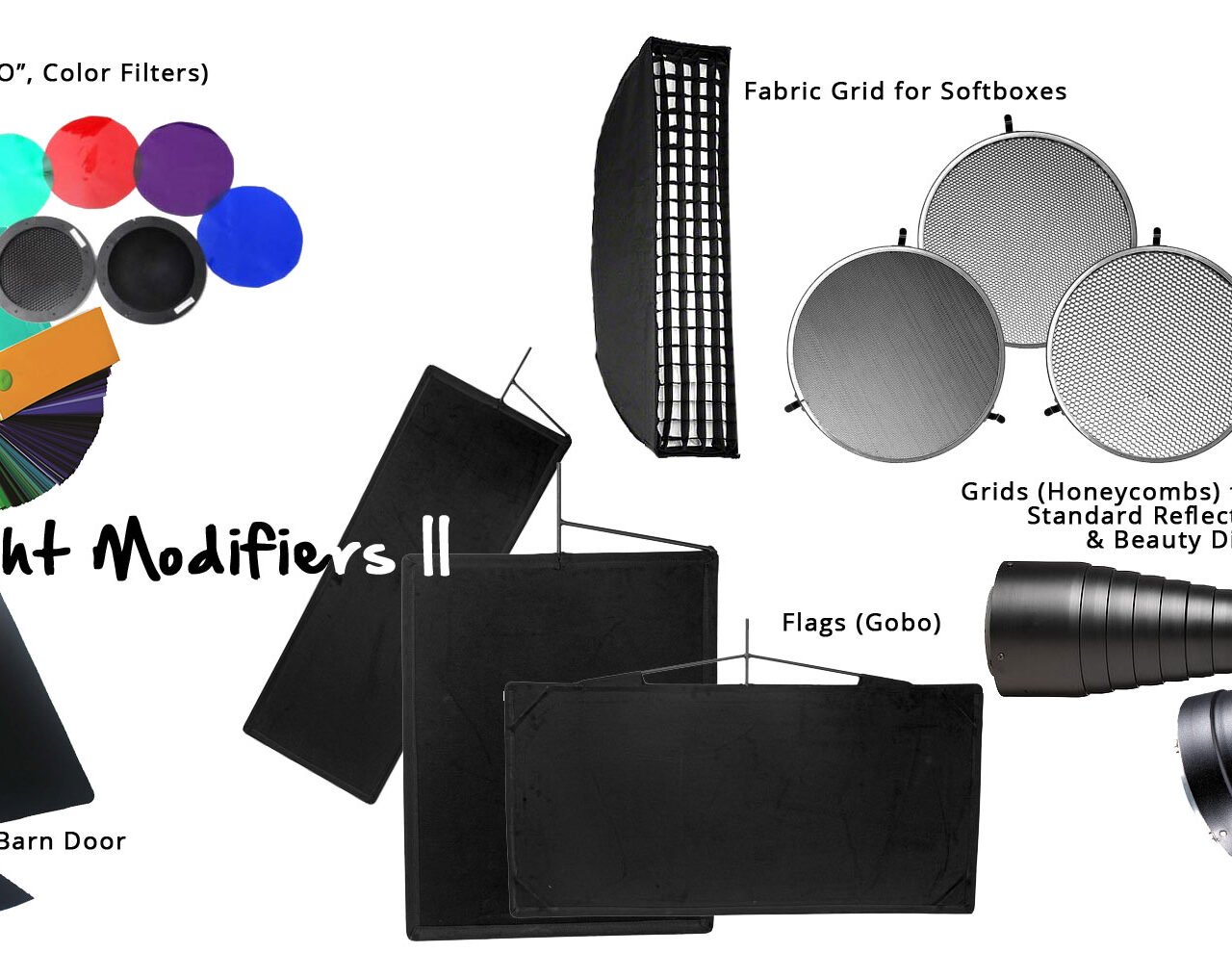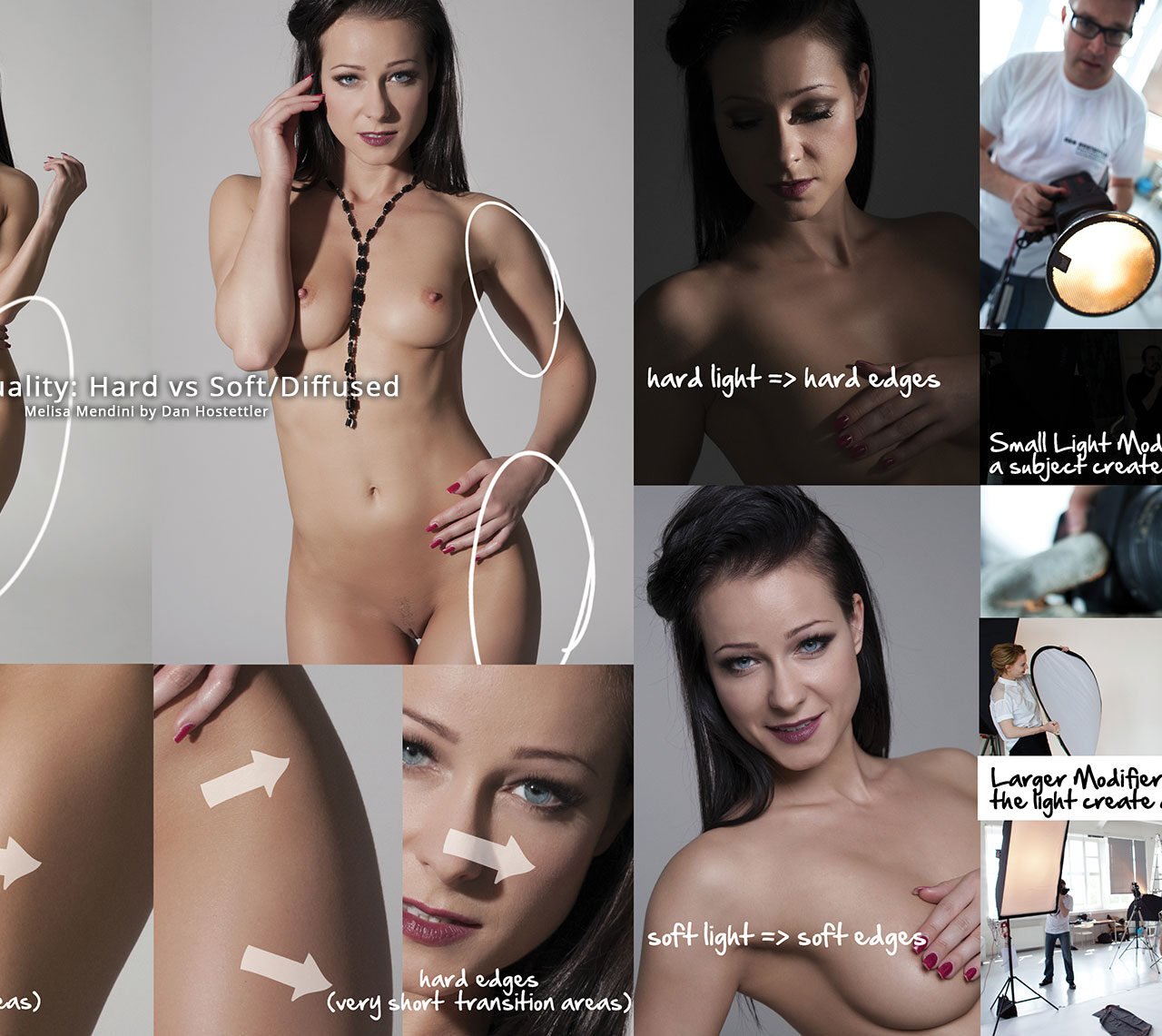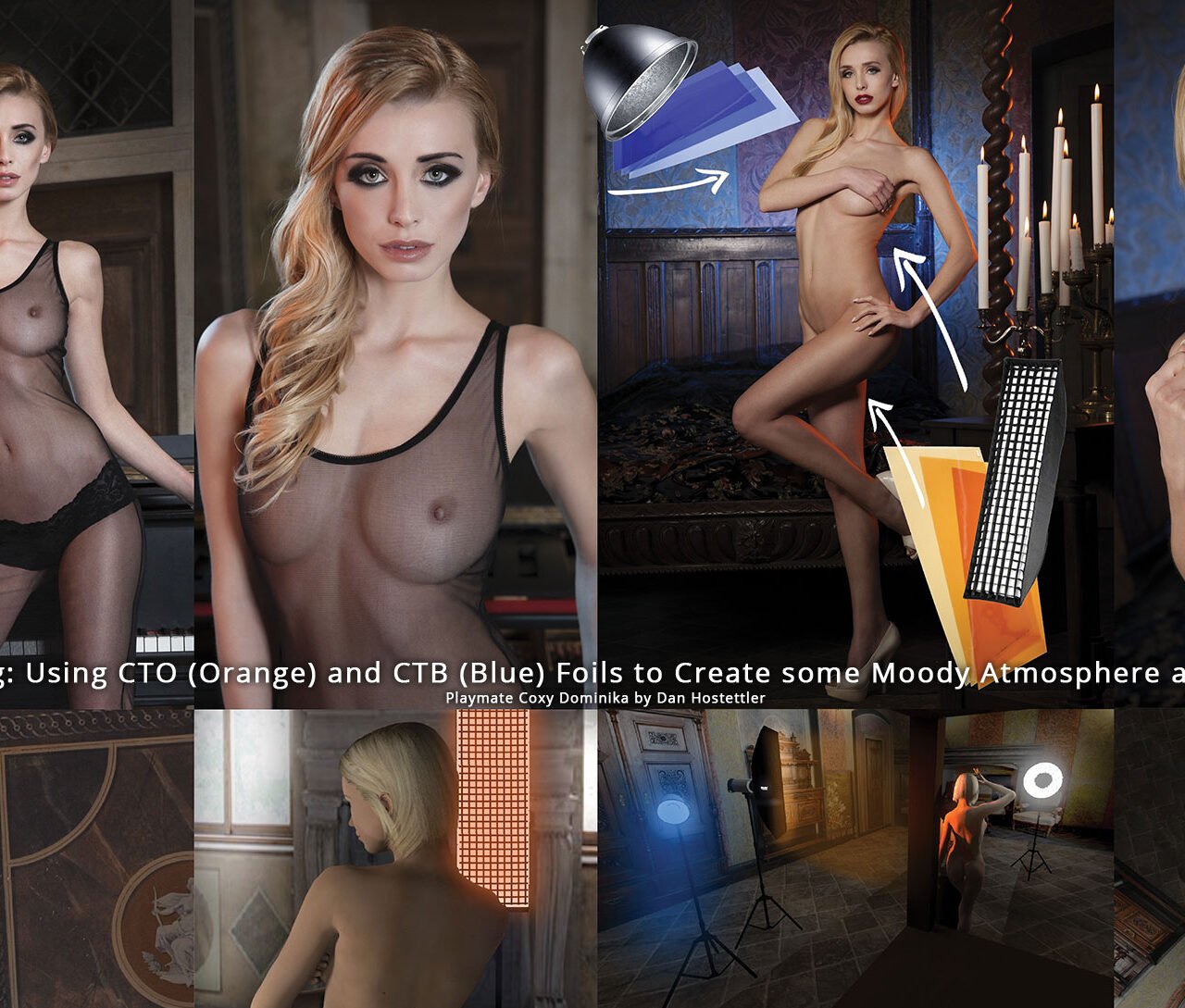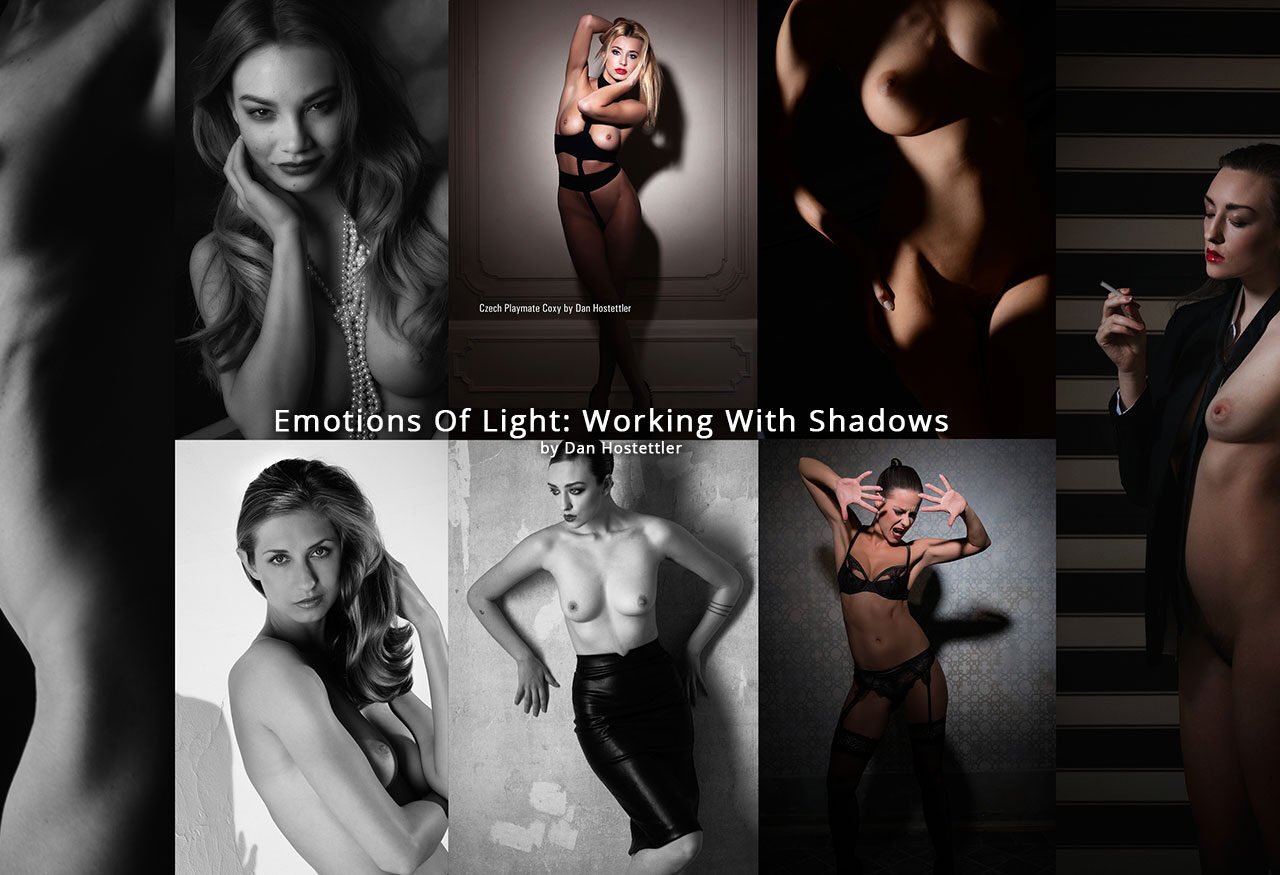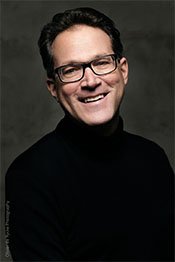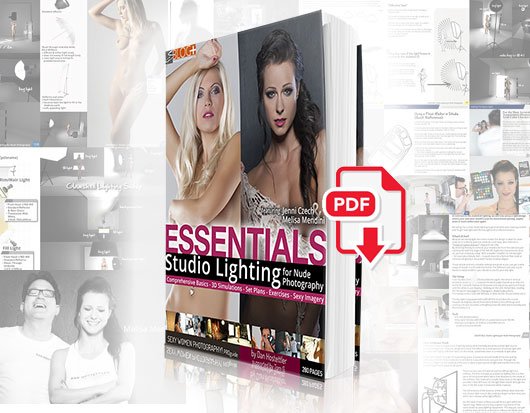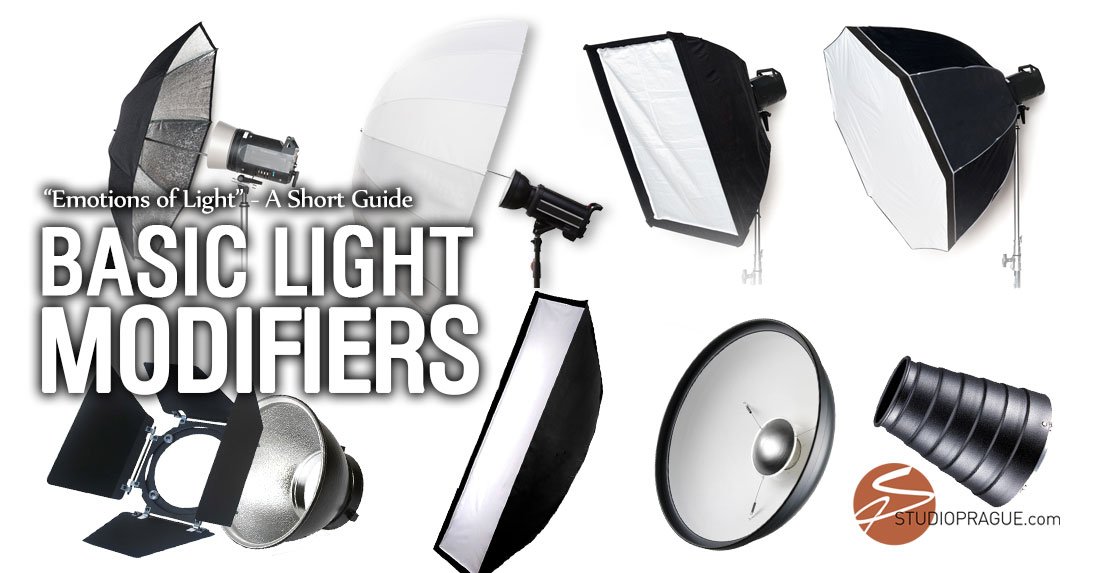
[Part 14/23 | Module 3: MASTERING THE LIGHT]
To get the best photography lighting results you will have to work with light modifiers.
Photographers use a variety of light modifiers for achieving different “Emotions Of Light” aka moods. There are many to choose from. What follows is a short guide introducing you to the most commonly used modifiers for portrait, glamour and nude photography.
A Blank Canvas For Photographers
The painter, Ferdinand Hodler, once said: “The whole earthly magic of color and shade is derived from light”.
Hodler’s understanding of light was (and remains) not only true for paintings, but the art of photography as well.
Let’s dig deeper into the art of photography lighting to help you shoot images with intent.
As a helper, the electronic flash head has been a boon to photographers’ blank canvases. And: flexible electronic lighting systems allow you to choose from many different modifiers to work with.
To get the right results (= intended moods) when shooting sexy women, light modifiers are your tools of the trade.
What Is A ‘Modifier’?
Anything you can use to set
- in front of,
- to reflect,
- or to place
around a light source (i.e., the flash head) is a modifier.
A modifier is, in a simple description, a light shaper. Various modifiers shape light in different ways.
There are many variations of these light-shapers available, nearly one for almost every lighting effect you might want to create. Fortunately, you don’t need (to buy) all of them. A few, however, are nearly essential for shooting models.
Standard Reflectors
Reflectors, that is, all-purpose metal reflectors are often-used modifiers. Most monoblocs come with reflectors when you purchase them. They are small, metal, silver coated, parabolic shaped and mount to the front of the light source. They usually come in diameters between 15-22 cm (6 to 9 inches).
These reflectors restrict the beams produced by a flash tube to between 90 and 120 degrees. When you want to bounce your strobe’s flash off of a wall or a ceiling or a big piece of white foam-core or styro-foam board, reflectors of this sort come in very handy. There are also small reflectors like these you can mount to the business-end of your speedlights and they serve the same purposes as those that come with monolights.
Umbrellas: Reflective & Shoot-Through
There is no more popular and often-used modifier than the reflective umbrella. Reflective umbrellas bounce the light back out of the umbrella. That’s because the light source is aimed into the umbrella rather than away from it, as is the case with strobe reflectors. Reflective umbrellas produce a broad and scattered light with fairly good contrast. Reflective umbrellas are available with different interior surfaces – silver, gold, and white.
Shoot-through umbrellas are made of nylon or plastic and are translucent, that is, they permit light to pass through. When using a shoot-through umbrella, both the light source is pointed at the model, with the umbrella in front of it. Shoot-through umbrellas also provide a broad and soft light but the light is more contained or controlled than when using a reflective umbrella.
As a general rule, and regardless of whether you’re using a reflective or shoot-through umbrella, the larger the umbrella, the softer and more scattered the light. The cool thing about umbrellas is they produce very similar light characteristics to a softbox, but generally at a fraction of the cost of a softbox. The down-side is the light from umbrellas is less contained, less controlled, than when using soft-boxes.
Soft-Boxes (aka Softbox, Soft Box)
Rectangular and square soft-boxes are so named because they are
- generally rectangular or square
- box-like and
- produce soft light.
Soft-boxes of varying sizes often represent the ultimate in soft light tools for glamour and nude photography. Soft-boxes contain and control the output of light better than umbrellas.
Soft-boxes can be used with studio strobes, with speedlights, and with continuous lighting devices through the use of interchangeable speed rings or other mechanical devices to attach them to any flash heads or nearly all continuous light fixtures used for photography.
Many photographers believe soft-boxes are the most versatile modifiers available. Like umbrellas, soft-boxes are easily set-up, broken-down, stored, and transported.
Octagonal Softbox (Octobox)
Unlike rectangular or square soft-boxes, the quality of light produced by these eight-sided Octoboxes is spread more evenly around your model’s face and body because of this tool’s octagonal shape. Generally, octo-boxes produce less contrast and a slightly softer light than other soft-boxes.
Reflections (or catch-lights) in your model’s pupils will look almost round (possibly more natural or less distracting?) whereas the light-shaping produced by standard soft-boxes appears rectangular or square as catch-lights (like a window-type-fake).
Beauty Dishes
Light modified by beauty dishes is preferred by many photographers. Not just glamour and nude photographers but fashion shooters as well .
A beauty dish compares to the light qualities produced by large and deep parabolic reflectors. The light from a beauty dish falls-off as you move away from the center of the dish and the effect is quite pleasing. The beauty dish is often considered the perfect modifier for glamour and nude portrait lighting.
With beauty dishes, the contrast can be higher with sharper shadows depending on the distance between the dish and the model. Because of this, setting the dish quite close to your model is often preferred because the light will be softer and “creamier” and fewer flaws in the model’s skin will be revealed.
Beauty dishes also come with front diffusers, called “baffles” (or “diffuser sock”) , and can be attached to the dish to produce and even softer, overall light.
Gels
Gels modify light by changing the color of the light. Gels can be used creatively or for balancing the colors of mixed lighting sources.
Gels are fairly heat-resistant and are made of tough film-like material. They are attached to the fronts of light sources and are available in many different colors and intensities. You can use gaffer’s tape or clamps to attach gels to strobe or flash heads. Using genuine gaffer’s tape , as opposed to duct tape, means that no sticky residue will be left behind when you remove it.
Snoots & Grids (Honeycombs)
Snoots turn your lights into non-focusable spotlights. In other words, they contain the light in ways that produce a much more narrow, round, beam of light. Snoots are used for highlighting small areas of a model, as hair lights, and for highlighting other areas in your shooting environments.
A honeycomb is a tight grid. It permits light to shine through, bare light from a strobe or diffused light when using a soft-box or dish but limits the light’s spread. What it produces is a much more contained and controlled beam of light, even if the light source is quite large as it is when you mount a soft-box in front of it. Grids and honeycombs are available for beauty dishes, soft-boxes, and for mounting on small, metal reflectors.
Restrictors Or Light Controllers: Barn Doors & Flags
Barn doors and flags are used to control or limit the light, to flag the light, to prevent the light from reaching places the photographer does not wish it to go. Unlike most modifiers, these are used to limit/restrict the light.
Barn doors are quite popular. They allow you to control the light at its source by preventing it from spreading either vertically up and down or horizontally side to side, or (with a 4-door barn door) in all those directions at once. Barn doors allow you to shape the light, rather than soften or diffuse it.
Emotions Of Light: Use Shadows
The best photos are often those with shading. The balance between shadow and light is what makes photos more interesting and all the tools just described are designed to allow the photographer to apply those shades of light and shadow in creative and interesting ways.
When we’re viewers of photos, our eyes automatically move towards the brighter areas of photos. Because of this, photographers can use these tools to move viewers’ eye when looking at photos to where they want them to go.
All of the tools described, whether they are diffusing and softening the light, or helping to create or prevent shadows, allow photographers to paint with light and shadow in ways that make more interesting pictures. And painting with light is exactly what photographers – it’s what the word “photography” means – when they’re creating photos, i.e., painting on their blank canvases… in this case, their models.
Thanks for reading.
Start-Out With A Super Accurate Light Simulation Software:
set.a.light 3D Basic & STUDIO (Software)
set.a.light 3D STUDIO is the world’s first photo studio simulation, with which you can build lighting setups in advance. It’s the perfect photography studio simulator.
Prepare your shooting easily and plan the smallest detail, even before you enter the studio- all you need is a computer and ideas! Save a lot of time and money with experimenting & implementing your ideas & visions before you get on spot.
Author: Dan Hostettler 

A traveler at heart, inspired by women, working along Swiss precision.
Dan is a mediapreneur, photographer, author of several books, owner of StudioPrague and Founder + Editor in Chief of SexyWomenPhotography.com. Being a successful photographer for more than 15 years Dan got internationally published and featured on/in GQ Online, The India Times, FashionONE TV, FotoTV, GoodLight Mag, amongst many others.
Dan is currently residing and working in Prague, CZ, conducting nude photography workshops, productions and pushing educational formats to a new level.
Consider a Small Donation?
Your donation helps to sustain, create and regularly update the free content for you.
I love offering my knowledge to you and a small token of appreciation helps to keep the lights on.
Thank You!
Consider a Small Donation?
Your donation helps to sustain, create and regularly update the free content for you.
I love offering my knowledge to you and a small token of appreciation helps to keep the lights on.
Thank You!

